The Role of Power Transformers in Renewable Energy Integration?
Are you curious about how we’re making renewable energy work with our existing power grids? The secret lies in a technology that’s been around for decades: power transformers. But how exactly do these devices help us harness the power of the sun and wind?
Power transformers play a crucial role in integrating renewable energy sources into existing power grids. They facilitate voltage transformation, improve power quality, mitigate intermittency issues, and enable long-distance transmission of renewable energy. This makes them essential for creating a sustainable and efficient energy infrastructure.
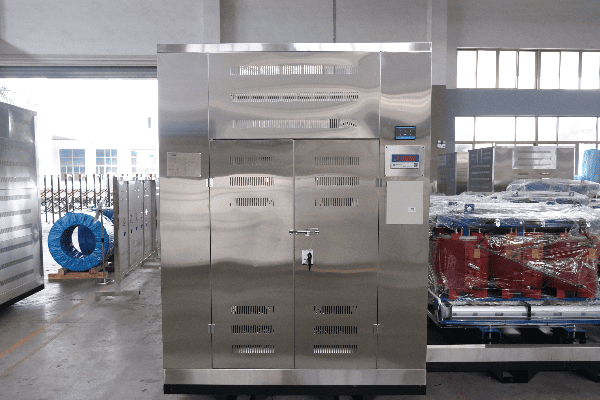
As someone who’s worked in the power industry for years, I’ve seen firsthand how transformers are adapting to the renewable energy revolution. Let’s dive into the fascinating world of power transformers and their role in our green energy future.
Voltage Transformation for Grid Compatibility: How Do Transformers Make Renewable Energy Play Nice with the Grid?
Have you ever tried to plug a European appliance into an American outlet? It doesn’t work without an adapter, right? Well, renewable energy sources face a similar challenge when connecting to the grid.
Power transformers act as the ‘adapters’ for renewable energy sources, converting the voltage from solar panels or wind turbines to match the grid’s requirements. This voltage transformation ensures that renewable energy can be seamlessly integrated into the existing power infrastructure without causing disruptions or damage.
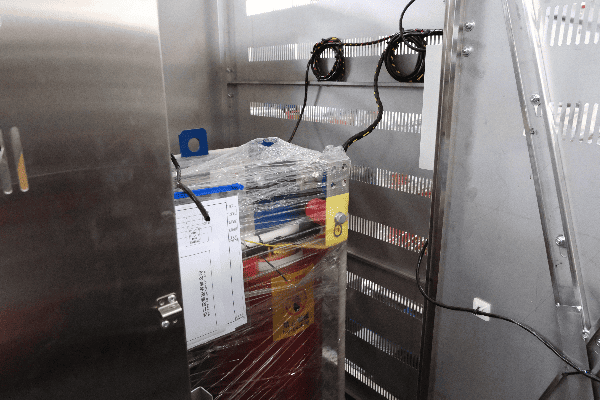
I remember working on a project to connect a large solar farm to the local grid. The mismatch in voltage levels was a significant challenge until we installed the right transformers. Let’s explore how these devices make renewable energy grid-compatible.
The Voltage Mismatch Challenge
Renewable energy sources often generate power at voltages that don’t match the grid:
- Solar Panels: Typically produce DC power at low voltages
- Wind Turbines: Generate AC power, but at variable frequencies and voltages
- Grid Requirements: Need stable AC power at specific voltage levels
How Transformers Bridge the Gap
Power transformers solve this mismatch in several ways:
- Step-Up Transformation: Increase voltage from renewable sources for efficient transmission
- Frequency Synchronization: Ensure the power frequency matches the grid (usually 50 or 60 Hz)
- Voltage Regulation: Maintain stable voltage levels despite fluctuations in renewable energy output
Here’s a simple comparison of voltage levels:
| Source | Typical Output | Grid Requirement | Transformer Action |
|---|---|---|---|
| Solar Farm | 1,000 V DC | 69,000 V AC | Step-up & Convert to AC |
| Wind Farm | 690 V AC | 138,000 V AC | Step-up |
| Grid Distribution | 138,000 V AC | 13,800 V AC | Step-down |
I once worked on integrating a wind farm where the transformers not only stepped up the voltage but also helped smooth out the power fluctuations caused by changing wind speeds. It was like watching a conductor harmonize an entire orchestra of renewable energy.
Power transformers are the unsung heroes making renewable energy speak the same language as our existing grid. They’re the key to unlocking the full potential of green energy sources and paving the way for a more sustainable future.
Power Quality Improvement: How Do Transformers Keep Our Renewable Energy Clean and Stable?
Have you ever experienced flickering lights or appliances suddenly shutting off? These are signs of poor power quality, and with renewable energy, maintaining good power quality can be quite a challenge. But fear not, power transformers are here to save the day!
Power transformers play a crucial role in improving and maintaining power quality from renewable sources. They help regulate voltage levels, reduce harmonics, and balance loads, ensuring that the electricity from solar panels and wind turbines is clean, stable, and compatible with our sensitive electronic devices.
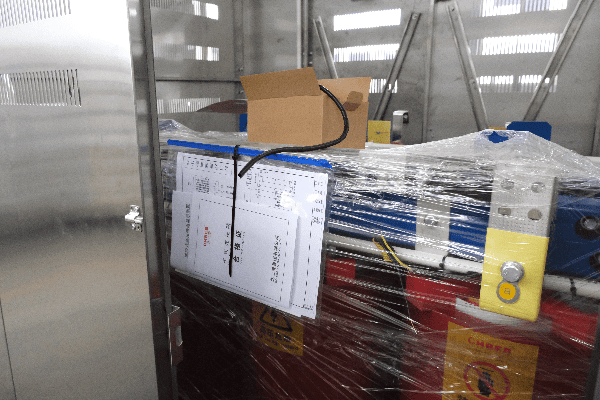
I once worked on a project where poor power quality from a solar farm was causing issues for a nearby factory. After installing advanced transformers with power quality improvement features, the problems disappeared. Let’s dive into how transformers keep our renewable energy clean and stable.
The Power Quality Challenge with Renewables
Renewable energy sources can introduce several power quality issues:
- Voltage Fluctuations: Due to varying sunlight or wind conditions
- Harmonics: Caused by inverters in solar systems
- Frequency Variations: Especially in small-scale wind turbines
- Reactive Power Imbalances: Can lead to inefficiencies and instability
How Transformers Improve Power Quality
Modern power transformers come equipped with various features to address these issues:
- On-Load Tap Changers (OLTC): Adjust voltage levels in real-time
- Harmonic Filters: Reduce distortions in the power waveform
- Phase Shifting: Balance loads across different phases
- Reactive Power Compensation: Improve power factor and stability
Here’s a comparison of power quality parameters before and after transformer intervention:
| Parameter | Before Transformer | After Transformer | Improvement |
|---|---|---|---|
| Voltage Fluctuation | ±10% | ±2% | 80% reduction |
| Total Harmonic Distortion | 8% | 3% | 62.5% reduction |
| Power Factor | 0.85 | 0.98 | 15.3% increase |
I remember a case where we installed a transformer with advanced harmonic mitigation at a large solar farm. The local utility was amazed at the clean power output, which was indistinguishable from conventional sources.
Power transformers are like the quality control managers of our electrical grid. They ensure that the renewable energy we produce is of the highest quality, ready to power our homes and businesses without a hitch. As we continue to increase our reliance on renewable sources, the role of these transformers in maintaining power quality will only become more critical.
Mitigation of Intermittency Issues: How Do Transformers Smooth Out the Ups and Downs of Renewable Energy?
Have you ever noticed how the sun doesn’t always shine and the wind doesn’t always blow? This variability is one of the biggest challenges in renewable energy. But guess what? Power transformers are stepping up to tackle this issue too!
Power transformers play a crucial role in mitigating the intermittency issues of renewable energy sources. They work in conjunction with energy storage systems, smart grid technologies, and advanced control systems to smooth out power fluctuations, ensuring a stable and reliable supply of electricity even when renewable sources are variable.
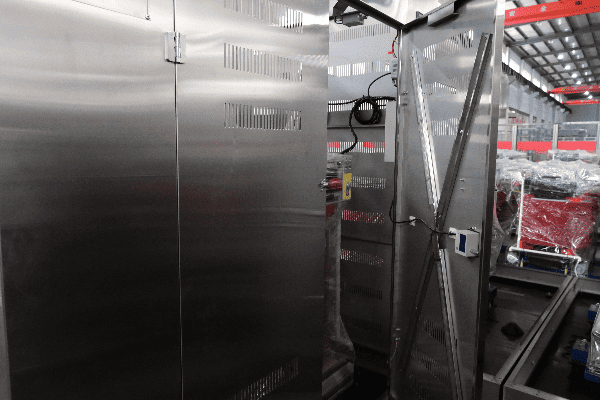
I once worked on a microgrid project that combined solar power with battery storage. The transformer we used was the key to managing the flow of power between the solar panels, batteries, and the local grid. Let’s explore how transformers help smooth out the renewable energy roller coaster.
The Intermittency Challenge
Renewable energy sources face several intermittency challenges:
- Daily Cycles: Solar power only available during daylight hours
- Weather Dependence: Cloud cover or low wind speeds can reduce output
- Seasonal Variations: Solar and wind output can vary significantly across seasons
- Rapid Fluctuations: Sudden changes in weather can cause quick drops or spikes in power
How Transformers Help Smooth the Ride
Modern transformers use several techniques to mitigate intermittency:
- Load Tap Changers: Adjust voltage levels to match varying input from renewables
- Integration with Energy Storage: Work with batteries to store excess power and release it when needed
- Smart Grid Communication: Coordinate with other grid components to balance supply and demand
- Reactive Power Management: Maintain grid stability during fluctuations
Here’s a look at how a transformer-managed system handles intermittency:
| Time | Solar Output | Battery State | Transformer Action |
|---|---|---|---|
| Noon | High | Charging | Step-down voltage, charge batteries |
| Evening | Low | Discharging | Step-up voltage from batteries |
| Cloudy Day | Variable | Balancing | Rapid adjustments to maintain stable output |
I remember a particularly cloudy week at a solar farm I was monitoring. The advanced transformer system, working in tandem with battery storage, managed to maintain a steady power output despite the challenging conditions. It was like watching a skilled juggler keeping multiple balls in the air.
Power transformers are the unsung heroes in the fight against renewable energy intermittency. They’re the steady hand that smooths out the natural ups and downs of solar and wind power, ensuring that our lights stay on and our devices keep running, regardless of what’s happening outside.
Enabling Long-Distance Power Transmission: How Do Transformers Help Renewable Energy Go the Distance?
Have you ever wondered how electricity from a wind farm in the middle of nowhere reaches bustling cities hundreds of miles away? The answer lies in the magic of power transformers and their ability to enable long-distance power transmission.
Power transformers are crucial in enabling long-distance transmission of renewable energy. They step up the voltage for efficient long-distance travel, reducing power losses along the way. This allows renewable energy sources, often located far from population centers, to effectively contribute to the grid and power our cities.
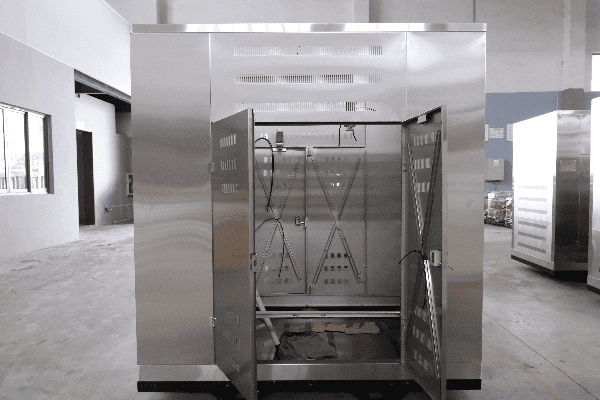
I once worked on a project connecting an offshore wind farm to a city 200 miles away. The massive transformers we used were the key to making this long-distance relationship work. Let’s dive into how transformers help renewable energy go the distance.
The Long-Distance Challenge
Renewable energy sources often face geographical challenges:
- Remote Locations: Best wind and solar sites are often far from cities
- Power Losses: Electricity loses energy as it travels along wires
- Voltage Drop: Voltage decreases over long distances
- Grid Stability: Maintaining stable power over long distances is complex
How Transformers Bridge the Gap
Transformers use several techniques to enable long-distance transmission:
- Step-Up Transformation: Increase voltage for efficient transmission
- HVDC Conversion: Some systems use High Voltage Direct Current for very long distances
- Reactive Power Compensation: Maintain voltage levels over long distances
- Intelligent Monitoring: Real-time adjustments to maintain efficiency
Here’s a simplified look at voltage levels in long-distance transmission:
| Stage | Location | Voltage Level | Transformer Action |
|---|---|---|---|
| Generation | Wind Farm | 690 V | Step-up to 400 kV |
| Transmission | Power Lines | 400 kV | Maintain high voltage |
| Distribution | Substation | 400 kV to 11 kV | Step-down for local use |
I remember standing next to a massive transformer at a coastal substation, watching it effortlessly handle the power from an offshore wind farm. It was stepping up the voltage from 33 kV to 400 kV, preparing the electricity for its long journey to the city.
Power transformers are like the long-distance runners of the electrical world. They take renewable energy from remote locations and carry it efficiently across vast distances to where it’s needed most. Without them, much of our renewable energy potential would remain untapped, too far from the urban centers that need it most.
Conclusion
Power transformers are the unsung heroes of renewable energy integration. From making solar and wind power compatible with our grids to ensuring its quality, smoothing out its variability, and carrying it across vast distances, transformers are essential at every step. As we continue to shift towards a greener energy future, the role of these remarkable devices will only grow in importance. The next time you switch on a light powered by renewable energy, remember the intricate dance of electrons made possible by power transformers.
Free CHBEB Transformer Catalog Download
Get the full range of CHBEB transformers in one catalog.
Includes oil-immersed, dry-type, pad-mounted, and custom solutions.
Quick Message
Request A free quote
We'd like to work with you
- +86 15558785111
- [email protected]
- +86 15558785111
What We Do
CHINA BEI ER BIAN (CHBEB) GROUP, with 218 million in registered capital, originated from Beijing Beierbian Transformer Group. Headquartered in Beijing for R&D, it operates major production bases in Nanjing and Yueqing, producing high-quality products.
Latest Product
address
BeiJing
No 3,RongJing East Road,BeiJing Economic Technological Development Area,BeiJing,China
JiangSu
No 7️Xiangfeng Road,Jiangning,NanJing,JiangSu,China
WenZhou
No.211, Wei 16 Road, Industrial Zone, Yueqing, Wenzhou, Zhejiang, China.
XiangYang Industrial Zone ,YueQing,WenZhou,ZheJiang,China
contact us
- [email protected]
- +86 13057780111
- +86 13057780111
- +86 15558785111
Copyright © Bei Er Bian Group


